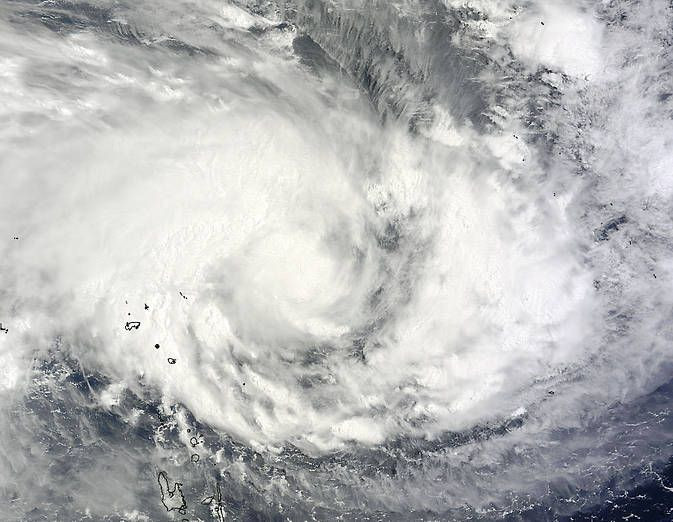Tropical Cyclone Pam Slams Vanuatu Islands, ‘Monster’ Pacific Storm Headed For New Zealand

Tropical Cyclone Pam slammed the small Pacific island nation of Vanuatu late Friday with 165 mile-per-hour winds and torrential rainfall, the biggest storm in the Pacific in 30 years and the strongest one to make landfall since Super Typhoon Haiyan devastated the Philippines in 2013, according to the New Zealand Herald. Meteorologists said as many as 250,000 people on Vanuatu could be directly affected by the Category 5 storm, dubbed the “Vanuatu Monster.” The storm is expected to reach New Zealand by Sunday or Monday.
“As far as I can remember, this is the first [Category 5] cyclone to come very close to Vanuatu,” David Gibson, director of the Vanuatu Meteorological Service, told the Guardian. “This is obviously a once-in-a-lifetime experience for most of us.” The country is an archipelago located between mainland Australia and Fiji.
The powerful storm made a direct hit on Vanuatu’s capital city Port Vila, which sits on the country’s western coastline and is exposed to storm surges. Officials issued evacuations across the country of just 267,000 residents. The storm forced tens of thousands of people from their homes and into evacuation centers and hotels around Port Vila.
Alice Clements, spokeswoman for humanitarian aid group UNICEF, said the conditions were getting “wilder by the minutes.” Outer islands' homes, which are typically made of thatched roofs and light timber, weren’t expected to hold up against the storm, according to Television New Zealand.
Cyclone Pam #TCPam is now thrashing Vanuatu with 240 km/h winds. Follow @350Pacific Facebook: https://t.co/yg0xxBgdCT pic.twitter.com/wD7Yr7T8hz
— 350 dot org (@350) March 13, 2015Infrared imagery of Tropical Cyclone #Pam taken by @NASANPP around 1320 UTC (9:20 am EDT) today. pic.twitter.com/oErbDjAOkX
— NOAA Satellites (@NOAASatellites) March 12, 2015The latest MTSAT infrared imagery of Tropical Cyclone #Pam. View loop here: http://t.co/wBjWhztHIE pic.twitter.com/KMwl9oRaJC
— NOAA Satellites (@NOAASatellites) March 13, 2015Tropical Cyclone Pam formed Tuesday in the Pacific and quickly intensified from a Category 2 to a Category 4 storm. The powerful cyclone marched South over the next several days and has triggered storm warnings in the Solomon Islands and New Zealand, although meteorologists expect the storm to weaken by the weekend. It reached Category 5 status on Friday.
The last major storm to hit Vanuatu was Uma in 1987. The storm devastated Port Vila, causing widespread destruction at an estimated cost of $150 million. Fifty people lost their lives.
© Copyright IBTimes 2024. All rights reserved.






















